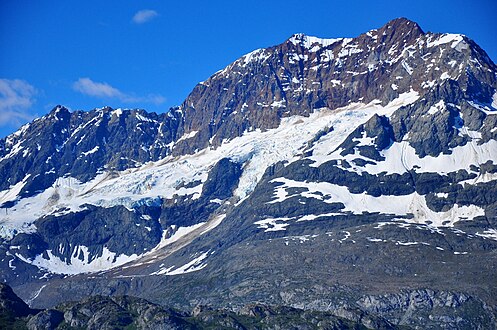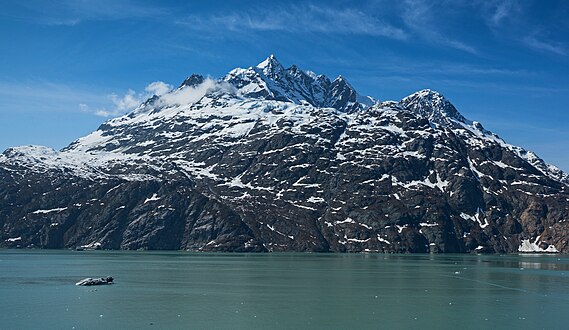Contents
Mount Cooper is a 6780-foot (2067-meter) mountain summit located in the Fairweather Range of the Saint Elias Mountains, in southeast Alaska.[2] The peak is situated in Glacier Bay National Park and Preserve at the entrance to Johns Hopkins Inlet, 100 mi (161 km) northwest of Juneau, and 5.6 mi (9 km) northeast of Mount Abbe, which is the nearest higher peak. Although modest in elevation, relief is significant since the mountain rises up from tidewater in less than two miles. Mount Cooper can be seen from Johns Hopkins Inlet which is a popular destination for cruise ships. The mountain's name was proposed in the 1950s for William Skinner Cooper (1884-1978), a plant ecologist who performed vegetation-glacier relationship studies in the Glacier Bay area, and was chairman of the committee of scientists which proposed establishing Glacier Bay National Monument.[2] The mountain's name was officially adopted in 1980 by the United States Geological Survey following Cooper's death.[2] The months May through June offer the most favorable weather for climbing Mount Cooper.
Climate
Based on the Köppen climate classification, Mount Cooper has a subarctic climate with cold, snowy winters, and mild summers.[3] Temperatures can drop below −20 °C with wind chill factors below −30 °C. This climate supports small hanging glaciers on its slopes as well as the larger Kashoto Glacier to the west and Lamplugh Glacier to the east. Precipitation runoff and meltwater from its glaciers drains into Johns Hopkins Inlet.
See also
References
- ^ a b c d "Mount Cooper, Alaska". Peakbagger.com. Retrieved 2020-01-18.
- ^ a b c "Mount Cooper". Geographic Names Information System. United States Geological Survey, United States Department of the Interior. Retrieved 2020-01-18.
- ^ Peel, M. C.; Finlayson, B. L.; McMahon, T. A. (2007). "Updated world map of the Köppen−Geiger climate classification". Hydrol. Earth Syst. Sci. 11. ISSN 1027-5606.
Gallery
-
Mount Cooper, northeast aspect
-
Summit detail
-
Mt. Cooper (left) and Johns Hopkins Inlet. Mt. Abbe (center)
-
Mt. Cooper from northeast
-
Mount Cooper
-
Mount Cooper and Lamplugh Glacier
External links
- Weather forecast: Mount Cooper







